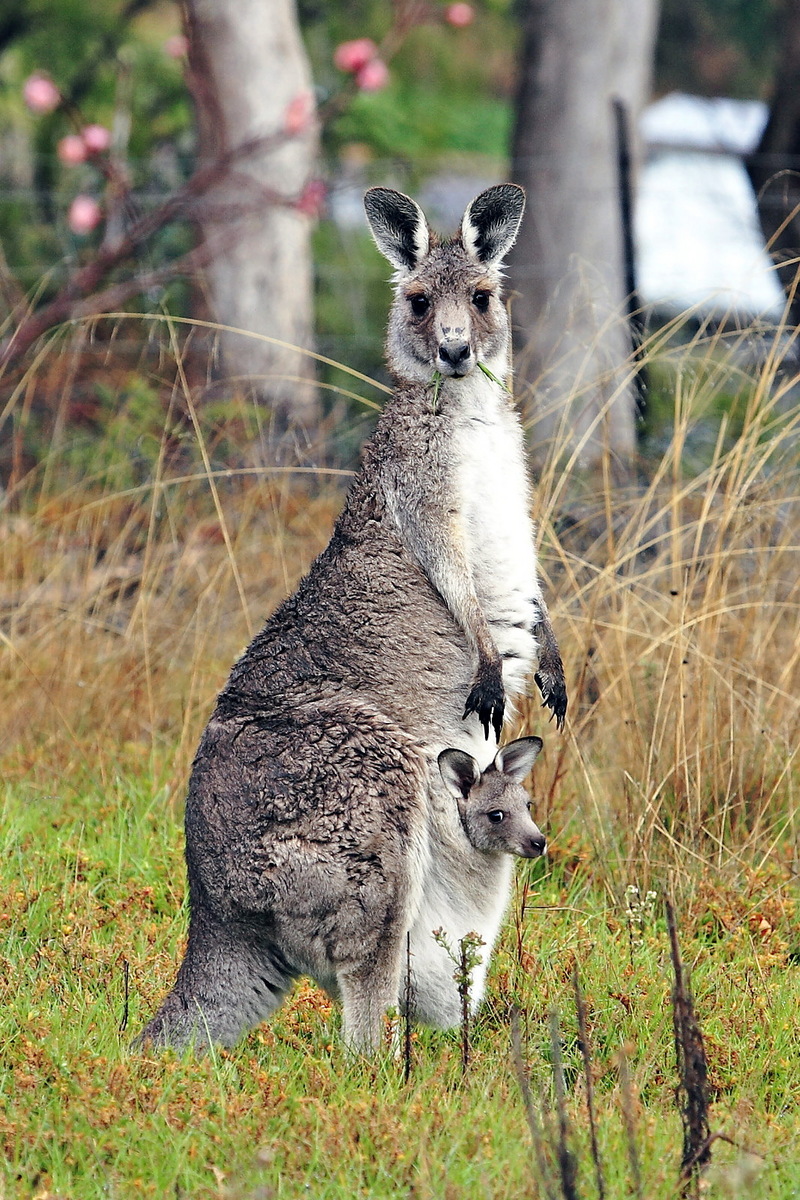ERROR : Server Busy(-1105)
ERROR : Server Busy(-1105)
Eastern Grey Kangaroo (Macropus giganteus) - Wiki
Eastern Grey Kangaroo
From Wikipedia, the free encyclopedia
[Photo] Eastern Grey Kangaroo with joey. Photo by http://en.wikipedia.org/wiki/User:Fir0002
The Eastern Grey Kangaroo (Macropus giganteus) is a marsupial found in southern and eastern Australia, with a population of several million. Although a big Eastern Grey male typically weighs around 66 kg (145 lb.) and stands almost 2 m (6 ft.) tall, the scientific name, Macropus giganteus (gigantic large-foot), is misleading, as the Red Kangaroo of the semi-arid inland is larger.
Description
The Eastern Grey is easy to recognise: its soft grey coat is distinctive, and it is usually found in moister, more fertile areas than the Red. Alternative names for the species include Great Grey Kangaroo and Forester. Indigenous Australian names include iyirrbir (Uw Oykangand and Uw Olkola) and kucha (Pakanh).
Ecology
Although the Red is better known by reputation, the Eastern Grey is the species most commonly seen in the flesh: few Australians visit the arid interior of the continent, while many live in and around the major cities of the south and east coast, from where it is usually only a short drive to the remaining pockets of near-city bushland where roos can be found without much difficulty. It prefers open grassland with areas of bush for daytime shelter. Like all kangaroos, it is mainly nocturnal and crepuscular, and is mostly seen early in the morning, or as the light starts to fade in the evening.
In more remote areas, the Eastern Grey occurs in great numbers and if left unchecked reaches plague proportions. From time to time shooters are employed to reduce its numbers, almost always to the accompaniment of a public outcry. Given the very limited amount of fodder in dry years, however, the only other choice is starvation.
Status
It is often said that kangaroo populations have increased significantly since the European colonisation of Australia because of the increased areas of grassland (as opposed to forest), the reduction in Dingo numbers, and the availability of artificial watering holes. At least so far as Eastern Greys are concerned, the scientific evidence suggests otherwise: the current population is to be measured in tens of millions, but the estimated pre-European population is thought to have been closer to hundreds of millions.
While the Eastern Grey remains common, there are vast areas of country from which it has been exterminated (in general, it avoids humans), and most of the more fertile districts now carry crops or exotic pasture grasses which kangaroos tend not to eat. (One of the easiest ways to find kangaroos is to look for patches of remnant native grassland.)
http://en.wikipedia.org/wiki/Eastern_Grey_Kangaroo
| The text in this page is based on the copyrighted Wikipedia article shown in above URL. It is used under the GNU Free Documentation License. You may redistribute it, verbatim or modified, providing that you comply with the terms of the GFDL. |
|

